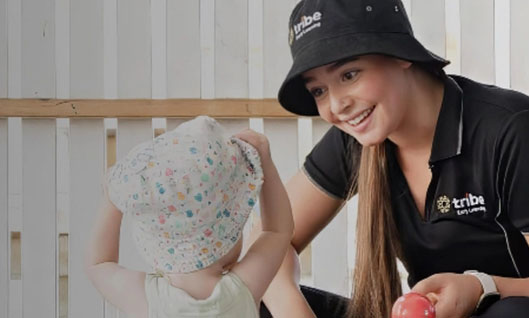As a parent, finding affordable childcare can be a daunting task. With the high cost of childcare in Australia, many parents are left wondering if they can receive any assistance. Fortunately, government subsidies are available to help families with the cost of childcare. Here, we will look closer at CCS, who is eligible, and how to apply.
Child Care Subsidy for Early Learning Centre
The Child Care Subsidy is a government payment designed to help eligible families pay for childcare. The subsidy is available for children who attend approved early learning centres, including extended day care, family day care, and outside school hours care.
To be eligible for the Child Care Subsidy, families must meet specific criteria: Firstly, the child must be aged 13 years or younger and not attending secondary school. The family must also meet the residency requirements, which include being an Australian citizen, permanent resident, or holding a relevant visa. In addition, the family must use an approved early learning centre and meet the work, study, or training requirements.
The work, study, or training requirements are among the most critical factors when determining eligibility for the Child Care Subsidy. Families must meet a minimum of eight hours of work, study, or training per fortnight to be eligible for any subsidy. This requirement applies to both parents, where applicable.
A family’s subsidy depends on several factors, including income, the type of childcare service used, and the hours of work, study, or other recognized activity undertaken by the family. The subsidy is means-tested, meaning that families with a higher income will receive a lower subsidy than those with a lower payment. This ensures that the subsidy targets those who need it the most.
One of the benefits of the Child Care Subsidy program is that it helps families to access quality early learning and care services for their children, which can be expensive without financial assistance.
How to Apply for the Child Care Subsidy
To apply for the Child Care Subsidy, families must complete an online application through their myGov account. Before applying, families should ensure they have the following information and documents:
- MyGov Login Details: Families must log in to their myGov account to access the Child Care Subsidy application.
- Tax File Number: Families must provide their and their partner’s tax file numbers as part of the application process. This information is used to verify income and eligibility for the subsidy.
- Income Estimate: Families must estimate their and their partner’s income for the current financial year. This information calculates the amount of subsidy a family is eligible to receive.
- Childcare Service’s Provider Number and Name: Families must provide the name and provider number of the childcare service they plan to use. This information is used to ensure the service is approved and pay the subsidy directly to the childcare service.
- Hours of Care Required: Families must provide details of the hours needed for each child using the childcare service. This information calculates the amount of subsidy a family is eligible to receive.
- Child’s Customer Reference Number (CRN): Families will need to provide the child’s CRN, which can be found on their Medicare card. This information links the child to the family’s Child Care Subsidy application.
Once all the necessary information and documents have been gathered, families can begin the online application process. The application is divided into several sections, including personal details, income estimates, childcare details, and family activity details. Families will need to answer all the questions in each section accurately and truthfully.
After the application has been submitted, the government will assess the family’s eligibility for the Child Care Subsidy based on their income, the hours of work, study, or other recognized activity undertaken by the family, and the type of childcare service used. The government will then advise the family of the subsidy they can receive.
Sometimes, the government may require additional information or documentation to support the application. If this is the case, families will be notified by the government and provided with instructions on how to provide the necessary information.
How to Work Out How Much Out of Pocket
The subsidy a family can receive towards their childcare fees will depend on their circumstances. They can use the government’s online Child Care Subsidy Calculator to calculate how much out-of-pocket a family will need to pay. Factors used to calculate how much out-of-pocket a family will need to pay for childcare include:
1. The Child Care Subsidy
This is means-tested, meaning that families with a higher income will receive a lower subsidy than those with a lower income. This is because the government wants to ensure that the subsidy targets families needing it most. The income threshold for the subsidy is reviewed annually, and families are advised to check the current income threshold before applying.
2. Hours of Work, Study
The more hours of work, study, or other recognized activity undertaken by the family, the higher the subsidy they may be eligible to receive. The government recognizes that families working, studying, or undertaking other recognized activities may need more time to care for their children and more assistance with childcare costs.
3. The Type of Childcare Service Used
Different childcare services have additional fees, and the amount of subsidy a family can receive may vary depending on the service used. For example, long day care may be more expensive than family day care, and families using extended day care may be eligible for a higher subsidy.
Once the calculator has considered these factors, it will estimate the family’s out-of-pocket expenses. This is the amount the family will need to pay for childcare after applying for the subsidy. The out-of-pocket costs may vary depending on the family’s circumstances and the type of childcare service used.
Flexible Hours and the Child Care Subsidy
Flexible hours and the Child Care Subsidy go hand in hand to give eligible families more options and control over their childcare arrangements. With the subsidy available for families who work, study, or undertake other recognized activities, it is easier for families to balance their work or study commitments with their family responsibilities.
This flexibility extends to the type of childcare that families can choose. The subsidy can be used for various approved childcare services, including extended day care, family day care, and outside school hours care. This means that families can choose the type of care that suits their needs and preferences based on location, hours of operation, and cost.
Families can also use a mix of formal and informal care, such as extended daycare and family daycare. This can be particularly useful for families with irregular work hours or those who work part-time. For example, a family may choose to use long daycare for their child on days when both parents are working full-time and use family daycare on days when one parent is working part-time or not at all. This can reduce the cost of childcare and provide more flexibility in terms of scheduling.
In addition to providing families with more options for childcare, the Child Care Subsidy can also be used for vacation care and outside school hours care. Families with school-aged children can access affordable childcare during school holidays and before and after school hours. This can be particularly useful for families where both parents work, or one parent is single.
The Child Care Subsidy is a government program that can help eligible families pay for childcare. It is available for children who attend approved early learning centres, including long day care, family day care, and outside school hours care.
To apply for the subsidy, families must complete an online application through their myGov account and provide the necessary information and documents or contact Tribe Early Learning today. Using the government’s online Child Care Subsidy Calculator, families can calculate their out-of-pocket expenses and estimate how much subsidy they can receive. The Child Care Subsidy provides families with more flexibility when choosing childcare, making balancing work, study, and family commitments easier.











